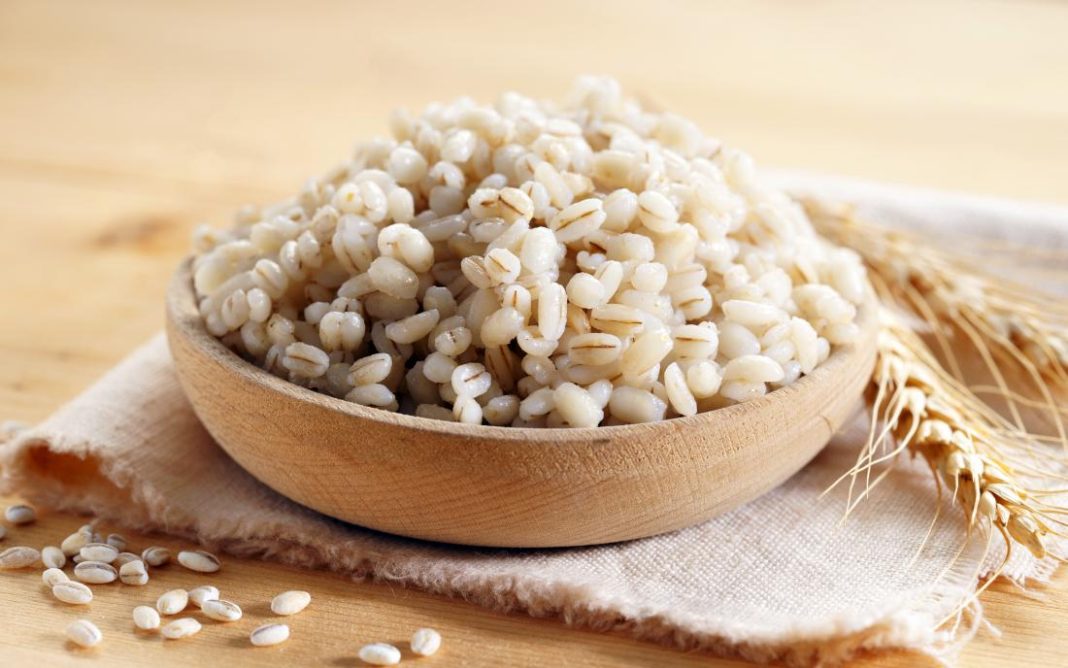Barley is an ancient cereal grain that has been used for thousands of years as a food source and for making beer. It is highly nutritious and contains essential vitamins and minerals, such as magnesium, potassium, and fiber. Barley is also a great source of protein for vegetarians and vegans.
One of the major benefits of barley is its ability to lower cholesterol levels in the body. The soluble fiber present in barley helps to reduce the absorption of cholesterol in the intestines, thus lowering overall blood cholesterol levels. This can help to reduce the risk of heart disease and stroke.
Barley can be cooked in a variety of ways, including as a breakfast porridge, boiled like rice or pasta, or added to soups and stews. It can also be ground into flour for baking bread and other baked goods. With its numerous health benefits and versatility in cooking applications, adding barley to your diet can be an excellent way to improve your overall health while enjoying delicious meals at the same time!
History
Barley is one of the oldest grains cultivated by humans and has a rich history of use in ancient civilizations. In ancient Egypt, barley was used to make bread, beer, and porridge. The Egyptians also believed that barley had medicinal properties and used it to treat various ailments such as diarrhea and constipation.
In ancient Greece, barley was considered a staple food and was often used to make porridge or baked into bread. It was also commonly used as an offering in religious ceremonies. Barley’s popularity continued throughout the Roman Empire where it was used to feed soldiers during long campaigns.
The versatility of barley made it a valuable crop for many cultures throughout history. Its ability to grow in diverse climates and soil types made it an important source of sustenance for communities worldwide. Even today, barley remains an essential ingredient in many dishes globally, from soups and stews to salads and even desserts!
Nutritional Benefits
Barley is a versatile grain that has been cultivated for thousands of years. It is a great source of nutrition and provides numerous health benefits. Barley is rich in fiber, which helps to keep the digestive system healthy and reduce the risk of heart disease. It also contains vitamin B complex, vitamin E, and minerals such as zinc, selenium, copper, and iron.
One of the most significant nutritional benefits of consuming barley is its high content of soluble fiber beta-glucan. This type of fiber helps to lower cholesterol by binding to bile acids in the gut and removing them from the body. Beta-glucan also slows down digestion which can help regulate blood sugar levels.
In addition to this, barley contains antioxidants such as lignans that have anti-inflammatory properties. These antioxidants are believed to have protective effects against chronic diseases such as cancer, diabetes, and heart disease. Eating barley regularly can provide an array of nutritional benefits that contribute to overall good health and well-being.

Preparation Methods
One of the easiest and most common ways to prepare barley is by boiling it in a pot of water. Rinse the barley under cold running water, and then add it to a pot with three cups of water for every cup of barley. Bring the mixture to a boil, reduce heat, cover, and allow it to cook for about 45 minutes or until tender. Drain any excess water and serve hot.
Another method is baking barley in an oven. Preheat your oven to 350 degrees Fahrenheit, rinse your barley under cold running water, then place it in a baking dish or casserole with three cups of liquid for each cup of barley. Add salt and spices as per preference, cover with foil, and bake for about an hour or until soft.
Lastly, we have Pressure Cooking Barley which is a quicker way to prepare this grain- Rinse your grains under running tap water; pour them into your Instant Pot along with two cups of fresh water (or broth), and secure the lid tightly on top; cook under high pressure according to manufacturer’s instructions.
Culinary Uses
Barley has been a staple food since ancient times, but it is still popular in modern cuisine due to its versatility and numerous culinary uses. This versatile grain can be used as an ingredient in various dishes such as soups, salads, stews, and even desserts. One of the most common ways to use barley is by adding it to soups and stews. Its chewy texture makes it an excellent addition to hearty soups like beef stew.
Barley can also be used as a base for salads. When cooked correctly, barley has a mild nutty flavor that pairs well with vegetables like carrots or cucumbers. Its chewy texture adds a unique crunch to the salad while also providing essential nutrients such as fiber and protein.
For those with a sweet tooth, barley can be used in desserts too! A popular dessert made from barley is pudding – which is made by cooking pearl barley into the milk until thickened then sweetened with sugar or honey before being topped off with fruits or nuts for added flavor and texture. In conclusion, the culinary uses of barley are endless- making it an excellent addition to any kitchen pantry!
Brewing Process
Barley plays a crucial role in the brewing process, as it is one of the main ingredients in beer production. Before it can be used, barley must first undergo a malted transformation which involves soaking and drying to activate its enzymes for later conversion into sugars. The malted barley is then crushed to form a grist, which is mixed with hot water to create wort.
During the mashing stage of brewing, enzymes in the malted barley break down complex carbohydrates into simple sugars like glucose and fructose. These dissolved sugars are then fermented by yeast during the next phase of brewing. Barley also contributes to the overall flavor profile of beer through its distinct malty taste and aroma.
It’s important for brewers to select high-quality barleys that will yield consistent results with each batch brewed. There are many different varieties of barley available, each with unique characteristics that affect the taste, color, and mouthfeel of the finished beer. Understanding how different types of barley can impact the brewing process is essential for any aspiring brewer looking to create a truly exceptional beer.
Potential Health Risks
Barley is a cereal grain that is commonly used for making bread, beer, and other food products. While barley has many nutritional benefits such as high fiber content and low glycemic index, it also poses potential health risks to some individuals.
One of the main concerns with barley is its gluten content. Gluten is a protein found in wheat, barley, and rye that can cause an immune reaction in people with celiac disease or gluten intolerance. For these individuals, consuming barley can lead to symptoms such as bloating, diarrhea, fatigue, and malnutrition.
Another potential health risk associated with barley consumption is the presence of mycotoxins. These are toxic substances produced by certain types of fungi that grow on grains like barley. Exposure to mycotoxins can lead to adverse health effects including liver damage and cancer.
Overall, while barley has many nutritional benefits for most people, those with celiac disease or gluten intolerance should avoid it or consume it only under medical supervision. Additionally, individuals who are concerned about mycotoxin exposure should ensure they purchase high-quality barley from reputable sources.
Conclusion
In conclusion, barley is a highly nutritious cereal grain that offers numerous health benefits. It is an excellent source of fiber, protein, and various essential minerals such as copper, magnesium, and selenium. Due to its high fiber content, barley can help lower cholesterol levels and improve digestive health by promoting regular bowel movements.
Furthermore, studies have shown that consuming barley may also reduce the risk of developing chronic diseases such as heart disease and type 2 diabetes. The soluble fiber found in barley can help regulate blood sugar levels by slowing down the absorption of glucose into the bloodstream.
Overall, incorporating barley into your diet can be a great way to boost your overall health and well-being. Whether you enjoy it in soups or stews or use it as a substitute for rice or pasta dishes, there are plenty of delicious ways to incorporate this versatile grain into your meals.
Published on March 11, 2023 and Last Updated on March 11, 2023 by: Mayank Pandey


